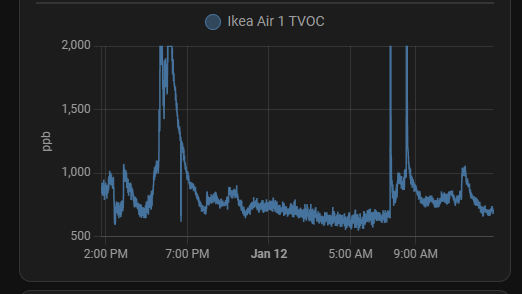I recently got the AirGradient One and I am trying to interpret the TVOC readings. Are these readings in a particular measurement like ppm or ppb? On the product information, it says that the sensor has a range of 0-1,000 ppm of ethanol equivalents; but are those the units given?
And, is there some way to make the unit upload in real time to the web interface? Or to correct the timezone? I’m trying to look at my current readings, and it’s 10:33 PM in my EST time zone; but the unit says that the most recent readings were from 23:08:10, which I’m assuming is 10:08 EST but the unit seems to think we are one hour ahead. Any way to fix the time that the unit thinks it is?

